Regional French pastries (part 2)
Welcome back to the next chapter of our French patisserie adventure! We’ve already savored the tasty delights from the northern and central parts of France, and now it’s time to journey south. Get ready to indulge in some of the local pastries that this region is famous for! :
- Nouvelle-Aquitaine
- Auvergne Rhône-Alpes
- Occitanie
- Provence-Alpes-Cote d’Azur
- Corse

Nouvelle-Aquitaine pastries
Le gâteau basque
Typical of Labourd (whose capital is Bayonne), the Basque cake, etxeko bixkotxa (house biscuit in basque), is a round and golden dry cake, crunchy and soft, traditionally filled with pastry cream or cherry jam. Quick tip: its taste is best after 48 hours of rest … so be patient before tasting it! (photo © Monsieur Cuisine)
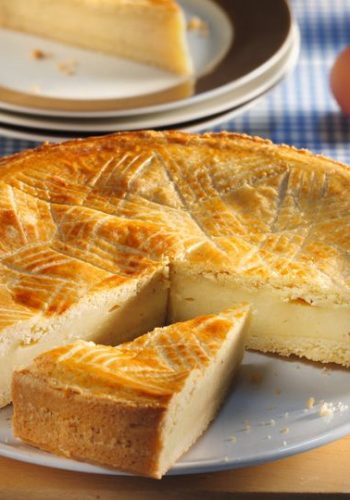
Le clafouti
Originally from Limousin, this dessert is traditionally made with cherries (not pitted), covered with a flan (custard tart) ingredients. There are now many variations, made with other fruits, such as apple, apricot or plum. An extremely simple recipe, clafouti is a delight for the whole family ! (photo © Cuisine A Z)
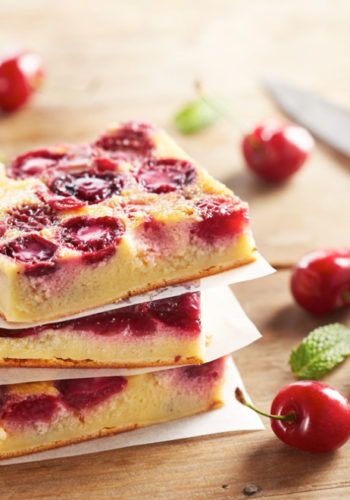
La tourtière ou croustade aux pommes
The tourtière is also called croustade aux pommes, pastis gascon or apple cobbler. It is an apple cake from the Landes de Gascogne. Origins are from the ancient Rome where it was called “crustata” in Latin. It is a cake made up of many, very thin layers of buttery and sweet dough. The anecdote is that the dough is rolled out so thin that you can see its transparency. For this reason, this paste is called the “veil of the bride”. The cake is then baked in the oven. Nowadays, to simplify the recipe, it is common to add a layer of apples or prunes, as a garnish and to add alcohol: the famous Armagnac! (photo © Cuisine A Z)
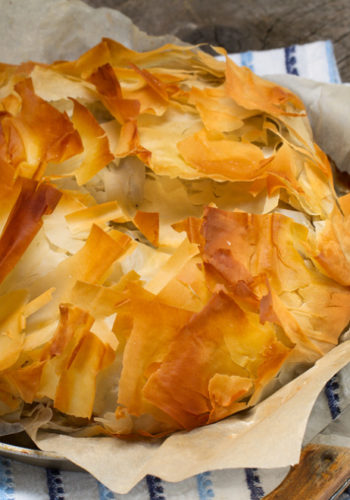
Le cannelé
A Bordeaux specialty, cannelé has delighted our taste buds with its delicious vanilla flavor and caramelized crust since the 18th century. Legend has it that this pastry was invented by the nuns of the Annonciades convent in Sainte-Eulalie. Today, if it is still produced mainly in its region of birth, cannelé is in everyone’s mouth from Paris to Nice. Some 5 million units are said to be sold each year in Gironde alone … (photo © Plating and pairings)

If you’re gearing up for a trip to Bordeaux and the stunning South West of France, consider enhancing your oral skills with online private French lessons before you go. This way, you’ll boost your confidence in conversations with locals and make the most of your time in France!
Auvergne-Rhône-Alpes pastries
Le gâteau aux noix de Grenoble
In Isère, walnut country with the famous PDO walnut, discover a tasty walnut cake, a recipe that is several hundred years old …The walnut cake from Grenoble is tasty. Its coffee extract icing and caramelized nuts enhance very pleasant flavors. The walnut cake is a gluten-free cake! (photo © Cuisine A Z )
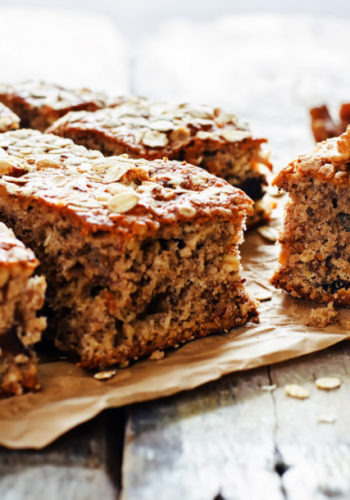
La tarte aux pralines
Let’s now head to Lyon, famous for the bouchons restaurants, with a very gourmet specialty: pink praline tart! It is as beautiful as it is good with the pretty pink color of its filling composed of cream and pralines (almonds coated in cooked and colored sugar).I’m not going to lie to you though, this is a pretty sweet dessert so you can reduce the amount of icing sugar in the dough when you bake it. The success of this tart depends a lot on the quality of the pralines and the cooking temperature: below 110 ° C, the filling will be too liquid, above, the filling will be too compact! (photo © Cuisine Actuelle )

Le gâteau de Savoie
We owe the Savoy Cake to the pastry chef of Amédée VI (1334 – 1383), Count of Savoy, Aosta and Maurienne. This Savoy cake has lasted over the following centuries, often being called the Savoy biscuit. After the Revolution, two Parisian pastry chefs, Benaud and Tavot, had the idea of replacing flour with starch, making this cake even lighter. This is a light and not fatty cake, excellent to end a meal or for an afternoon tea. You can eat it as it is or with a compote, a fruit salad or even an ice cream or a coulis of red berries. (photo © Cuisine A Z )
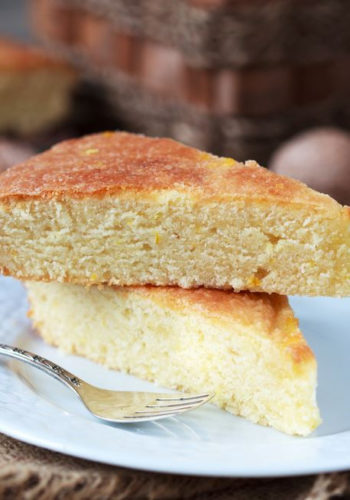
To boost your confidence when ordering in France, consider familiarizing yourself with essential French phrases used in restaurants. You’ll feel more at ease chatting with locals and truly savor your experience abroad.
Occitanie pastries
Le millas ou milhas ariégois
We also find the spelling milhas as the Languedoc name for corn was milhoc. Millàs (from Occitan “milh”, meaning millet and corn) is a dried flour porridge that can be roasted and is eaten in Languedoc. It is the Occitan equivalent of Italian polenta. This porridge was in the Middle Ages prepared with millet or millet, hence its name. Intended at that time for a poor population, it was also given to hunting dogs. Since the introduction of corn in Europe, milhàs is now prepared with corn flour. In poor households it replaced bread.
Now we eat it mainly for dessert, fried in a pan, in butter and sugar. It caramelizes a little and gives a good crispy color that contrasts with its texture. We enjoy it with quince jelly or homemade spread for even more gluttony. (photo © Cuisine à la française )
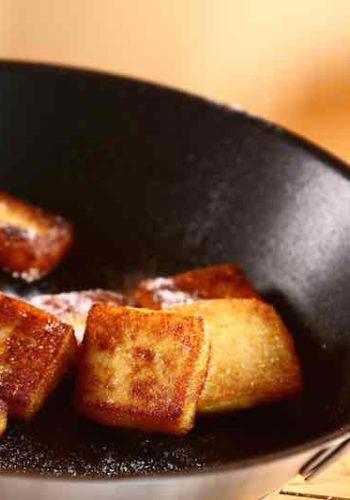
La crème catalane
If this cream looks like our crème brûlée, it is made in a very different way, and its texture is less rich, while being smooth. According to the recipes, it is flavoured with different ingredients : lemon, orange and cinnamon, which gives it a very pleasant tangy taste. (photo © Cuisine A Z )
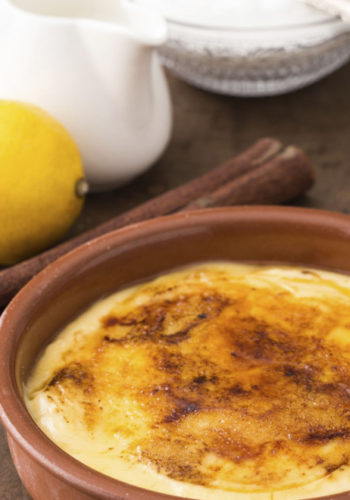
La rousquille
Rousquille is a fondant cookie covered with a light lemon or anis icing. Originally, they were produced and sold in Vallespir and in the Roussillon plain by street vendors who presented them suspended along a small stick in wood. They come in the form of a ring or crown covered with white icing. It’s a delicious and cute snack idea that kids really enjoy ! (photo © biscuits et compagnie )
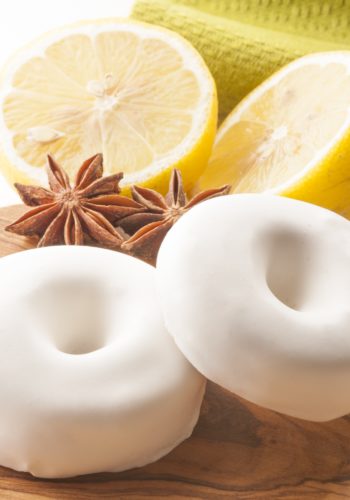
Le gâteau à la broche (Baumkuchen)
The spit cake is one of the most popular specialties in Aveyron. You can enjoy it during celebrations (baptisms, weddings, parties) as it takes place in the middle of the table. It is also found in the Aveyron markets. An aveyronnais inevitably knows someone who knows how to cook it and everyone gets their hands dirty! It’s a a guaranteed moment of conviviality and traditions are passed down (photo © Cuisine A Z)
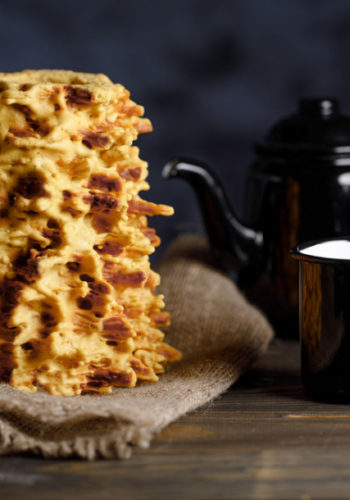
Prior to exploring the stunning South region, take a moment to check out key phrases for traveling in France. Mastering fundamental vocabulary enables you to interact more effectively with locals while tasting delicious pastries.
Provence-Alpes-Côte d'Azur pastries
La tarte tropézienne
This original tart is well established in the immediate region of Saint-Tropez . This cake is actually a soft and light sugar bun that has been split into two parts. The top is sprinkled at the end of the preparation with granulated sugar. Between the two halves of this brioche, slips the rigorously equal mixture of pastry cream and whipped cream, lightly flavored with orange blossom water.
Its creator, the Polish-born pastry chef Alexandre Micka, settled in Saint-Tropez in 1952. He got this recipe from his grandmother. He regularly introduced it during filming to the crew of “And God Created Woman”. Brigitte Bardot was crazy about it. The success has permanently installed her in memories and on tables. (photo © Sucre d’orge et pain d’épices)
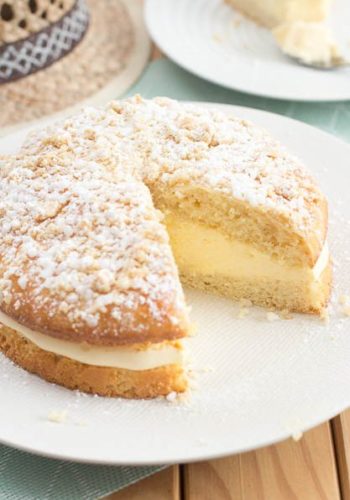
La pompe à huile (oil pump)
The oil pump, also called Arles fougasse, is a typical Provencal pancake flavored with orange blossom water and lemon or orange zest. It is one of the 13 Provençal Christmas desserts but you can eat them all year long. You need to prepare it in advance as the dough with the yeast needs to rest at least 8 hours in the fridge. But it will be worth the wait ! There are different versions of the oil pump without eggs or without butter. Traditionally though, it is made with olive oil and egg. (photo © Cuisine Actuelle)
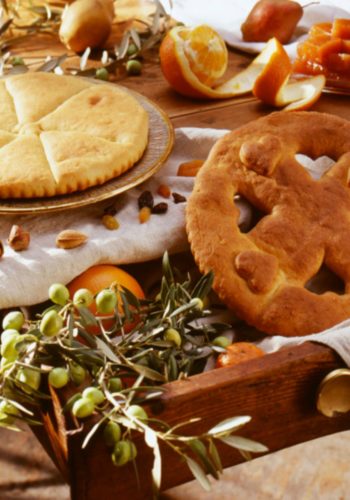
Les navettes
Another perfect treat for afternoon tea are navettes. Coming from Marseille, navettes carry a distinctive orange blossom water flavor, just like the streets of the city Phocéene. Les navettes symbolize the boat that carried 3 women bearing the name of Marie (the Saintes Maries) to the Camargue on the actual place which has now become the Saintes Maries de la Mer. La navette has this oval shape that represents the boat. (photo © Cuisine A Z)
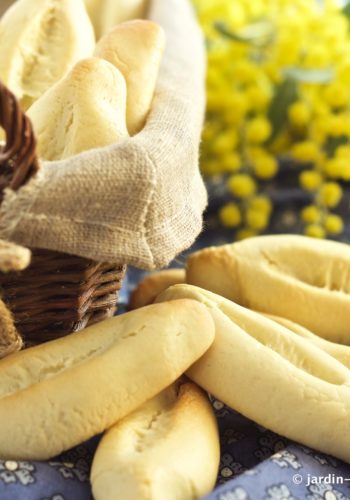
Occitanie pastries
Les canistrelli
Canistrelli are small Corsican dry biscuits flavored with anise and white wine. You can find several versions of Canistrelli: those with anise and with white wine are the most classic ones but it is possible to add almonds, hazelnuts etc … These biscuits are a real treat for the taste buds. Very quick to make, they are without eggs, without milk and without butter, therefore perfect for vegans. You can easily keep these biscuits in a metal tin for weeks! But, beware, at home, they may not last that long. (photo © Cuisine A Z)
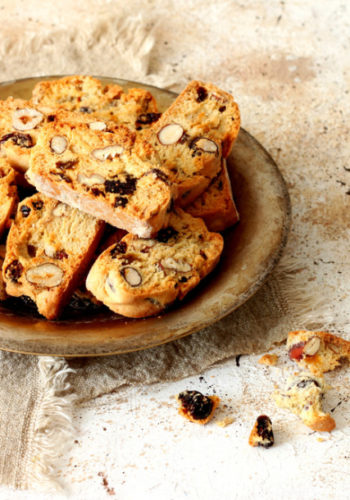
Le gâteau à la châtaigne
Easy to make in just 15 minutes with chestnut flour, baking powder, sugar, butter, eggs and cream. You can flavor it with zest of lemon or clementine as well as fresh pears or chocolate if you like. It’s a perfect seasonal cake, to prepare during the fall period or for Halloween. Without gluten and not much sugar, this cake appeals to many ! (photo © regal.fr)
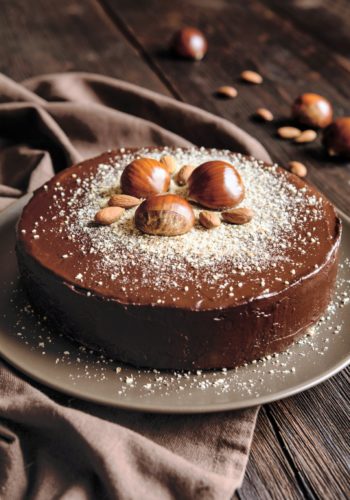
Le fiadone (corsican cheesecake)
Fiadone is without a doubt the emblematic Corsican dessert! This pastry is mainly eaten in winter, since it is made from Brocciu (cheese found in Corsica). In the middle of summer, it can just as well be tasted, but with another cheese called la Brousse! We love Fiadone for the simplicity of its recipe and especially for the inimitable taste of lemony freshness… Fiadone is called differently depending on the geographical location in Corsica. To the south, the Fiadone becomes the Ambrucciata. (photo © Cuisine A Z)

If you enjoyed this guide and want to dive more into the Gallic culture, my French blog will make reading and speaking French so satisfying !

Comments are closed.